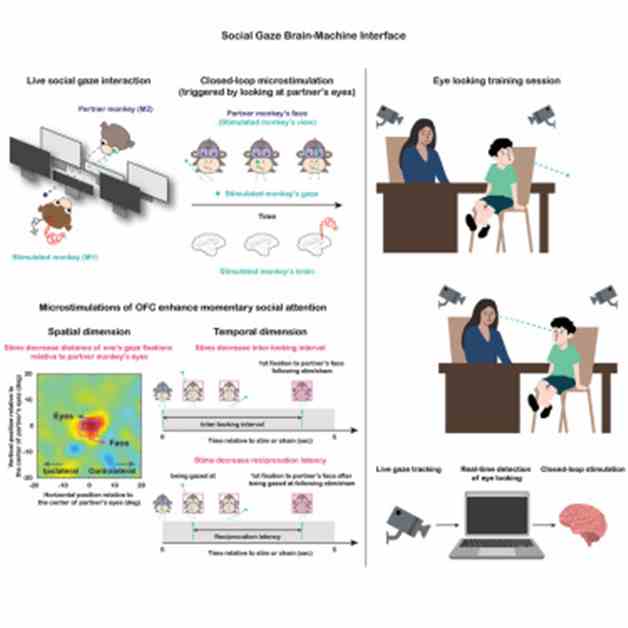Groundbreaking Study Reveals Insights on Social Attention
Introduction:
A recent study has shed light on the fascinating dynamics of social attention in primates. The prefrontal cortex, including the orbitofrontal cortex (OFC), plays a crucial role in processing social information and guiding behaviors in complex social environments. Understanding how the brain processes social gaze interactions is key to unraveling the intricacies of social behavior in animals.
How Does the Orbitofrontal Cortex Influence Social Attention?
Recent research has shown that the OFC, along with other prefrontal regions, exhibits robust neural representations for gaze fixations directed towards conspecific partners. These neural populations in the OFC become active during social gaze interactions, distinguishing social from non-social gaze events. By monitoring gaze fixations and distances between interacting individuals, the OFC provides a moment-by-moment index of social attention during social interactions.
What Were the Key Findings of the Study?
The study applied closed-loop microstimulations to the OFC, dmPFC, and ACCg during social gaze interactions in rhesus macaques. The results showed that microstimulations of the OFC enhanced dynamic social attention by reducing the distance of one’s gaze fixations relative to a partner’s eyes. Additionally, microstimulations of the OFC influenced the temporal dimension of social attention by promoting reciprocal gaze exchanges. These findings highlight the critical role of the OFC in controlling momentary social attention.
Can we Apply these Findings to Human Social Behavior?
While the study focused on rhesus macaques, the implications for human social behavior are significant. Understanding the neural mechanisms underlying social attention can provide valuable insights into human interactions and social cognition. Future research may explore how the findings from primate studies can be translated to human populations, offering new perspectives on social behavior and communication.
In conclusion, this groundbreaking study offers a unique perspective on the neural basis of social attention in primates. By uncovering the role of the OFC in dynamic social interactions, the study paves the way for further research into the complexities of social behavior across species. As we delve deeper into the mechanisms of social cognition, we gain a better understanding of the intricate dynamics of social interactions in the animal kingdom.



